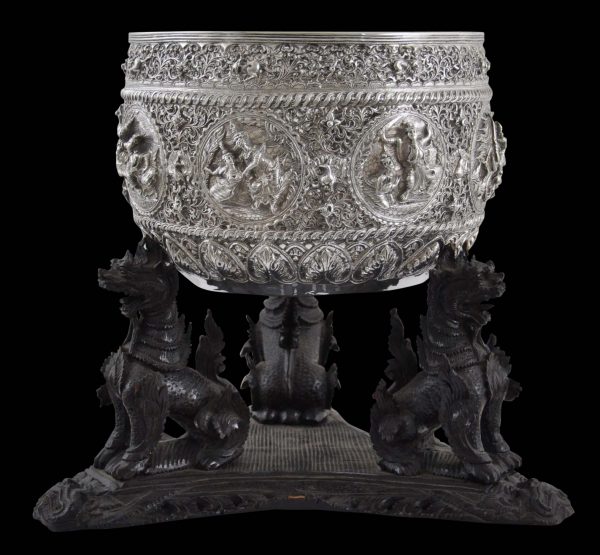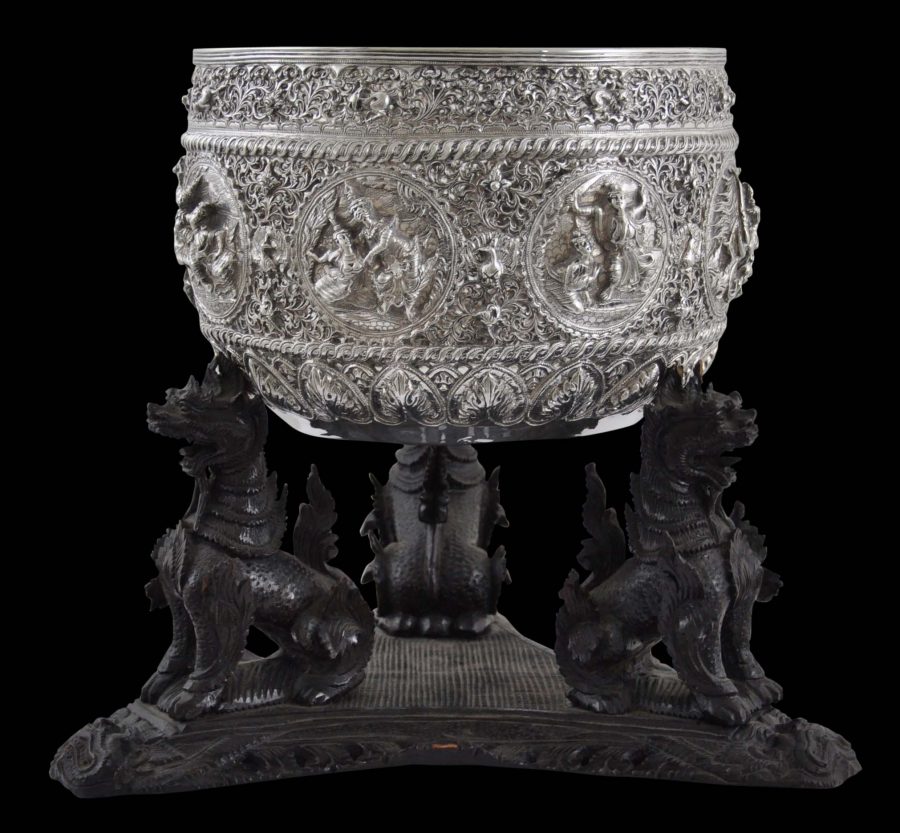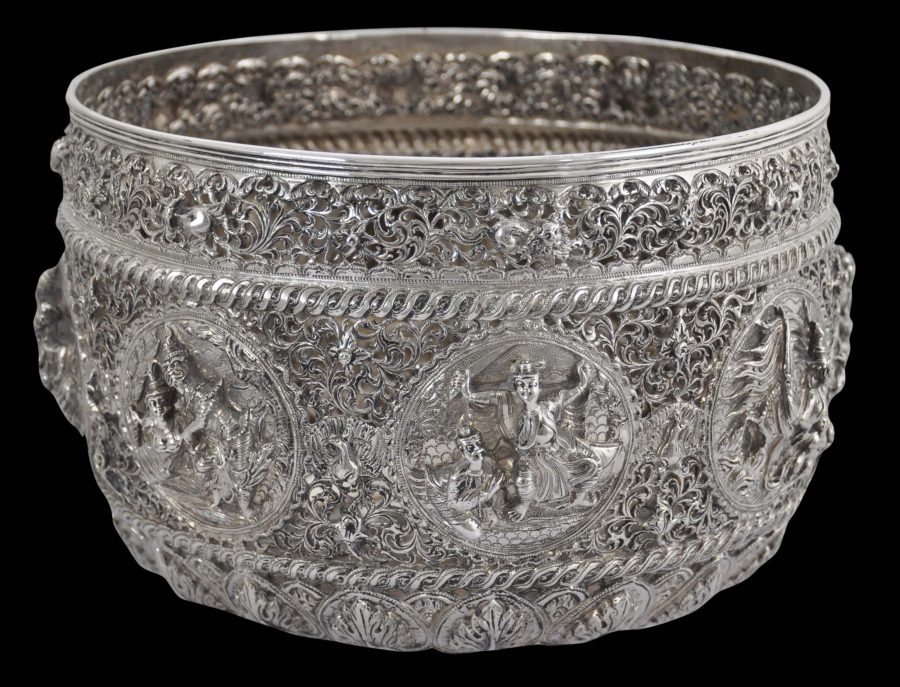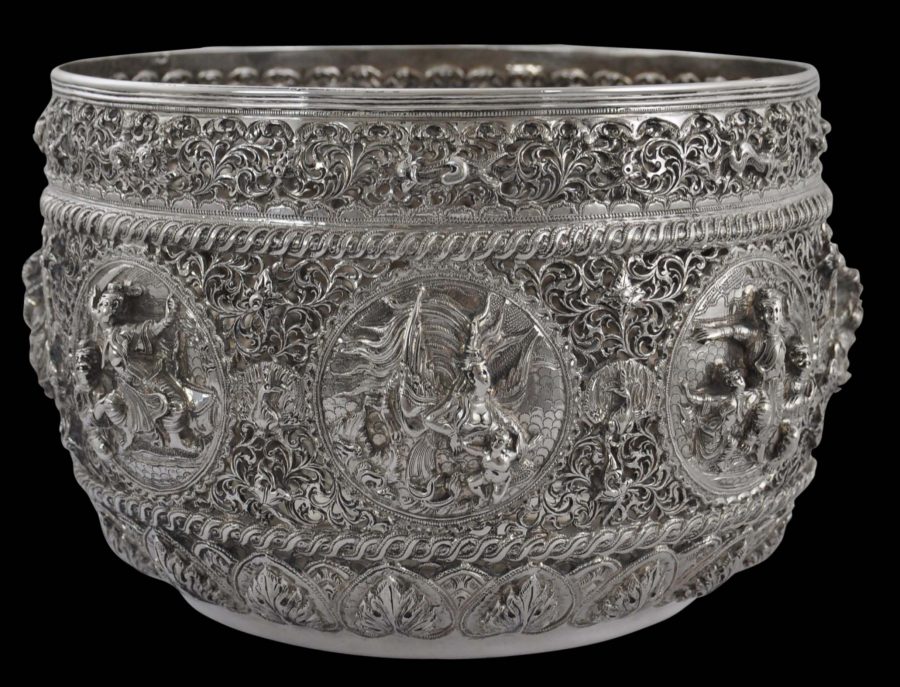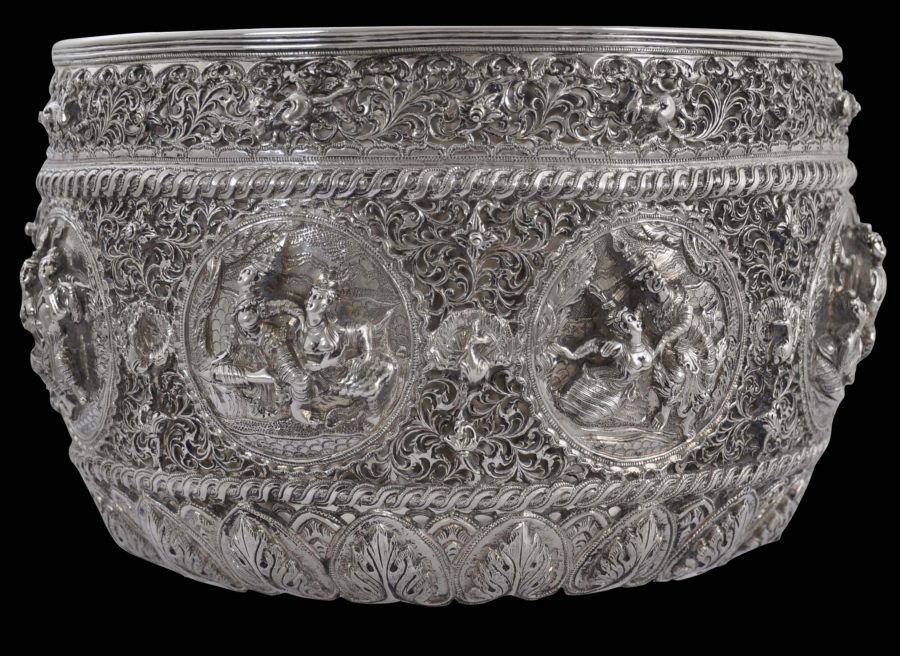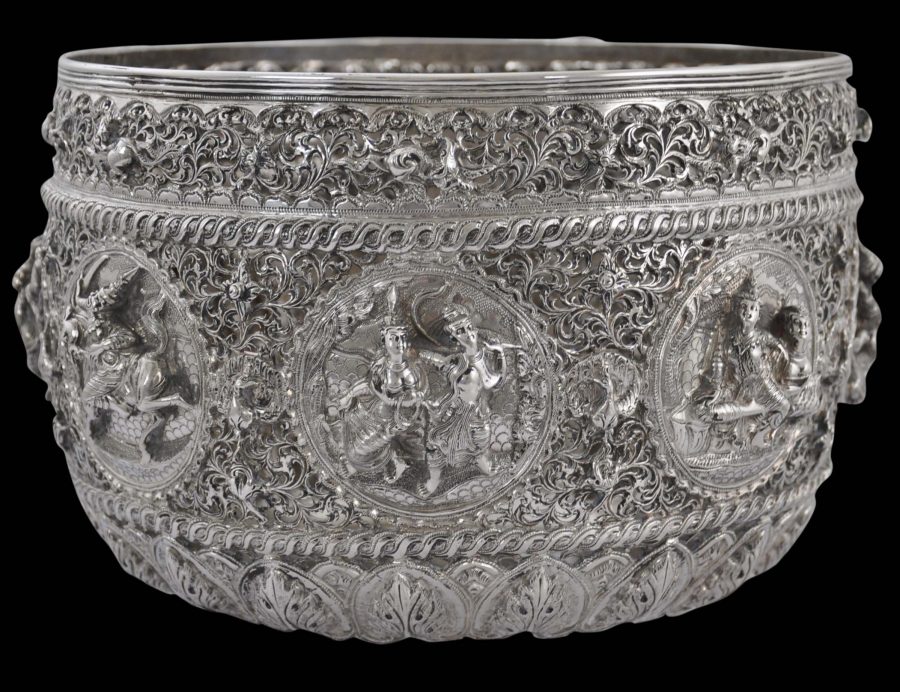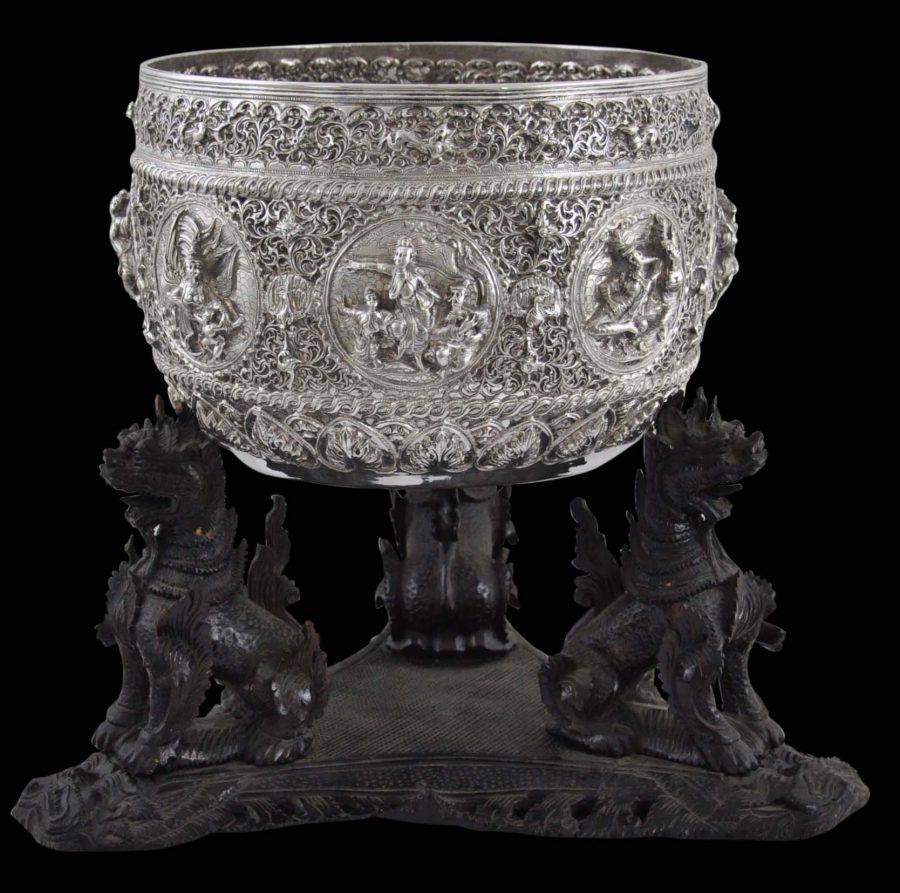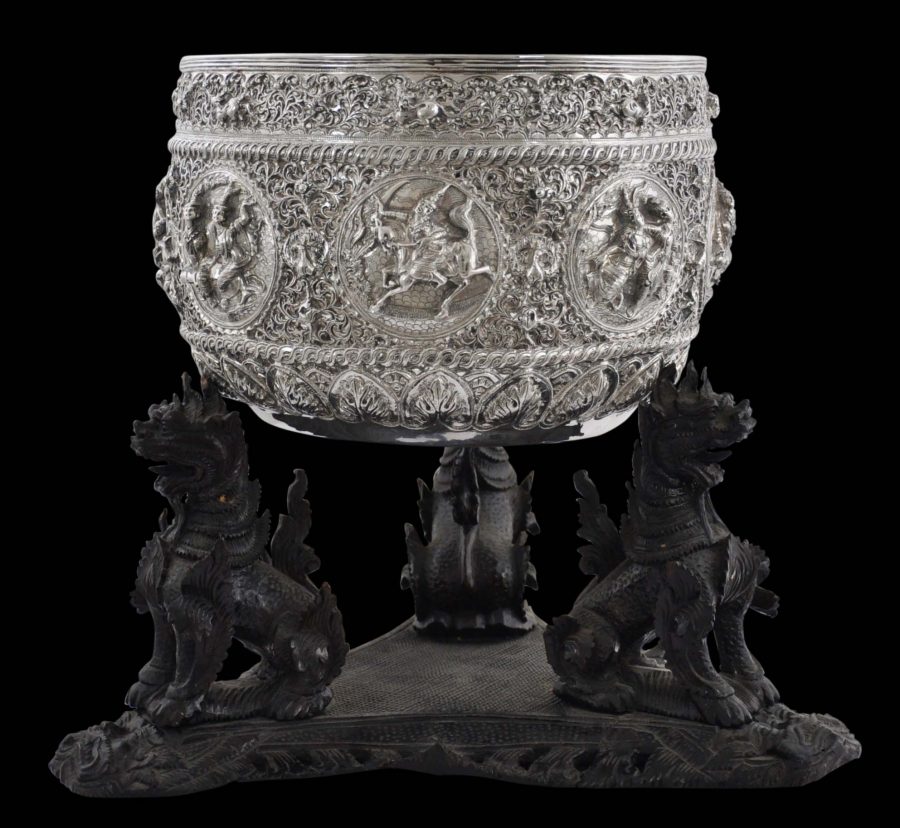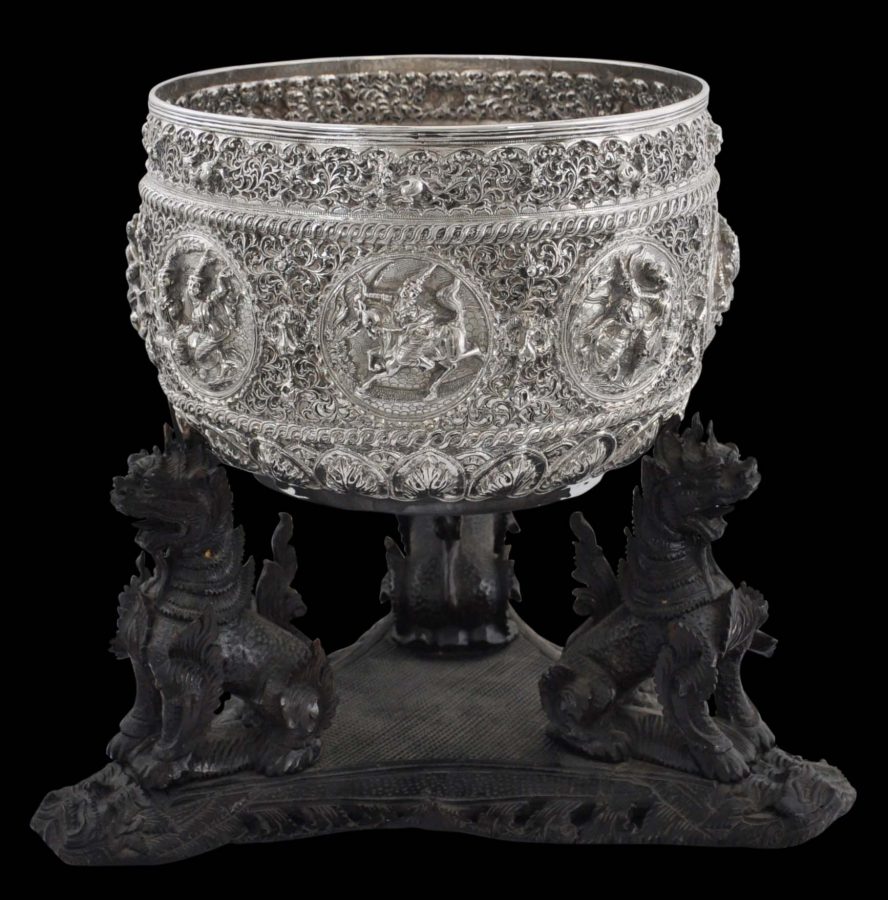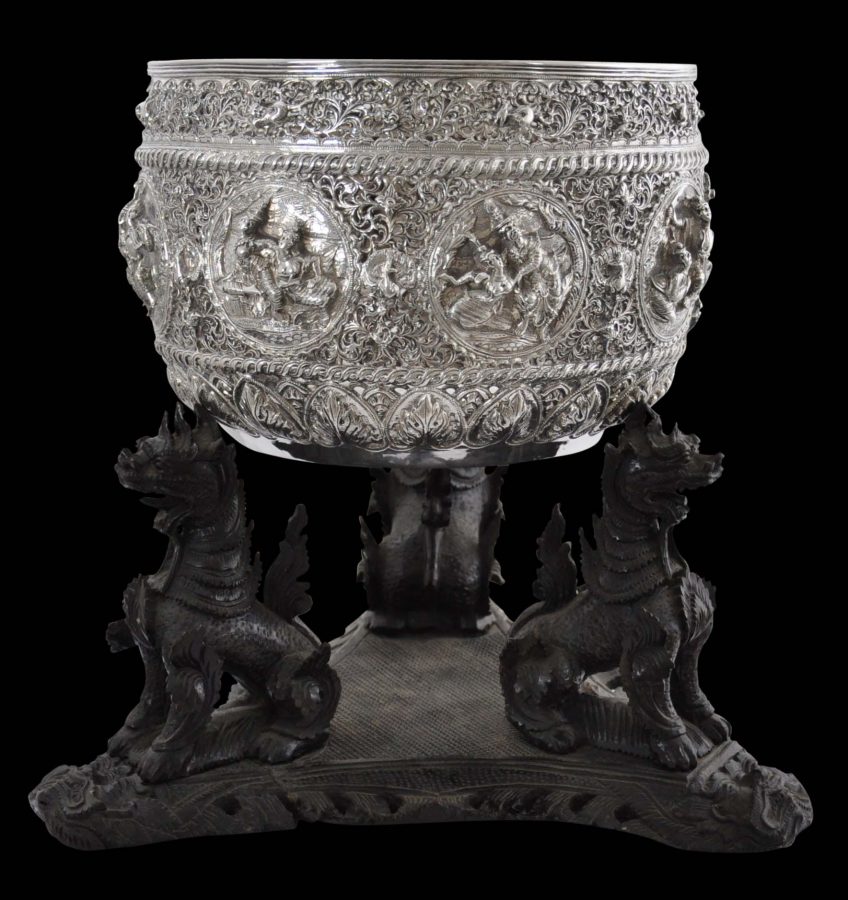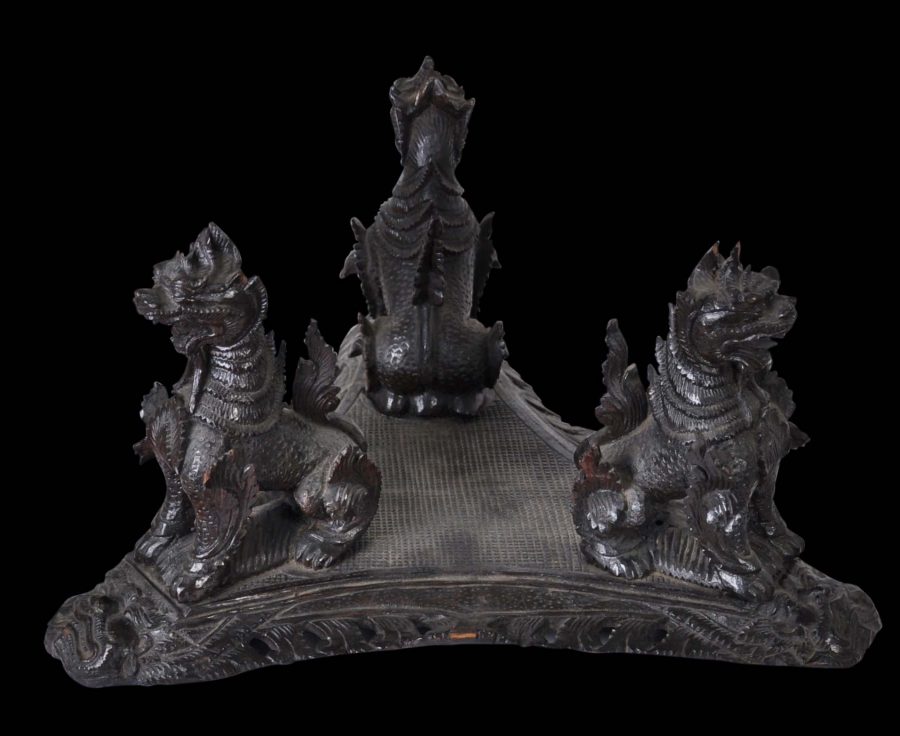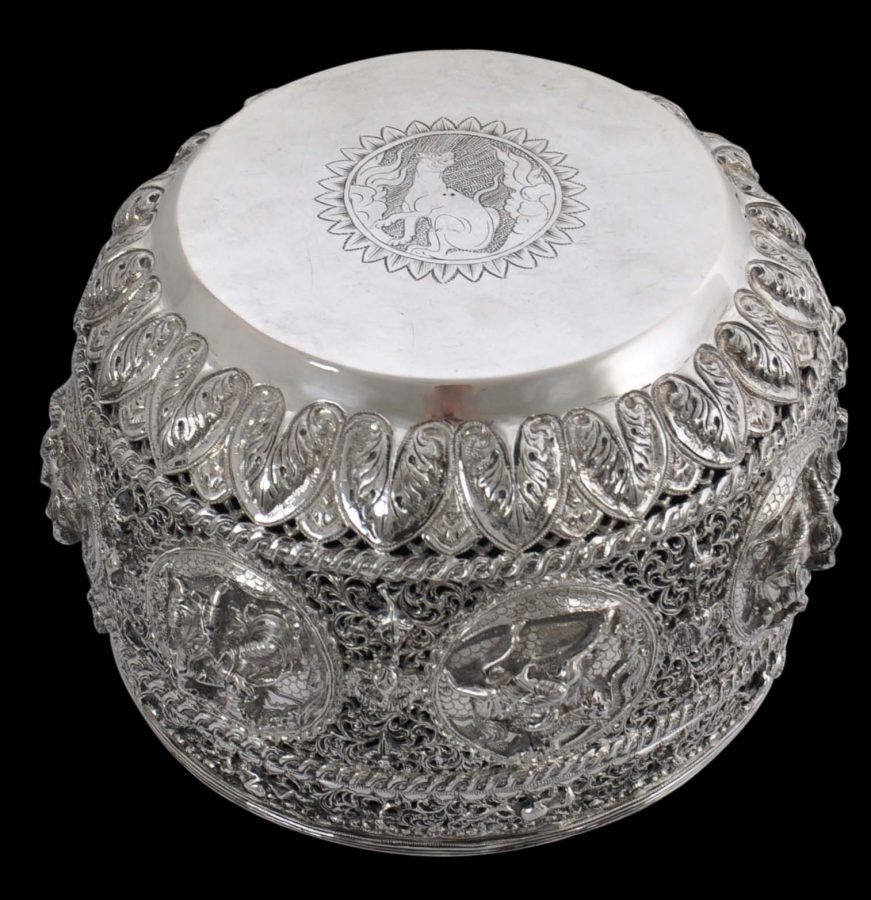This good-sized and exceptional bowl, which is accompanied by its original wooden stand, is a fine example of the heights that Burmese silverwork reached. It has eight roundels repoussed with Burmese courtly and other scenes amid a background of finely executed open-work.
The roundels are separated by small peacocks and flowers amid the openwork scrolls.
The upper border is unusually wide, pierced and decorated in relief with flowers and animals.
The lower border has a wide frieze in high relief of leaves.
The base is engraved with a decorative roundel filled with a feline-type creature.
Work of this type sometimes is associated with a small number of silversmiths who worked at Moulmein (now called Mawlamyine and located around 300km south east of Rangoon) in Burma in the early part of the twentieth century.
As mentioned, the bowl has its original wooden stand the supports of which a three finely-rendered Burmese chinthe lions. The foot of each leg also terminates with a carved protective demon’s face. The stand is the best example of such a stand that we have seen, particularly in terms of its warm colour and patina. The colour of the wood sets off the silver magnificently. It is a very fine pairing.
A pierced silver bowl similar to this, including having a similar carved wooden stand, is illustrated in Tilly (1902), an image which is reproduced in Fraser-Lu (1994, p, 179). It is conceivable, probable even, that this bowl and the Tilly bowl are by the same maker. However Tilly (1902, p. 18) identifies the maker of the bowl as Maung Shwe Yon of Rangoon, who Tilly says died in 1889.
Apart from the openwork, the other important similarity are the two bands of ‘S’ shaped twisting which border the roundels on either side. This feature is present in both the Tilly bowl and this example. (Items in the Tilly book were all prize-winning items of Burmese silver drawn from various provincial art competitions and government exhibitions in Rangoon, Delhi and Calcutta.)
The example here is in excellent condition and is without dents, splits or repairs. The wooden stand has small losses to the extremities. One of the feet has also been reattached. But this is minor, lost in the overall profusions, and compensated for by the fact that the stand is the original one and has such a beautiful patina.
References
Fraser-Lu, S., Silverware of South-East Asia, Oxford University Press, 1989.
Fraser-Lu, S., Burmese Crafts: Past and Present, Oxford University Press, 1994.
Tilly, H.L., The Silverwork of Burma (with Photographs by P. Klier), The Superintendent, Government Printing, 1902.
Tilly, H.L., Modern Burmese Silverwork (with Photographs by P. Klier), The Superintendent, Government Printing, 1904.


